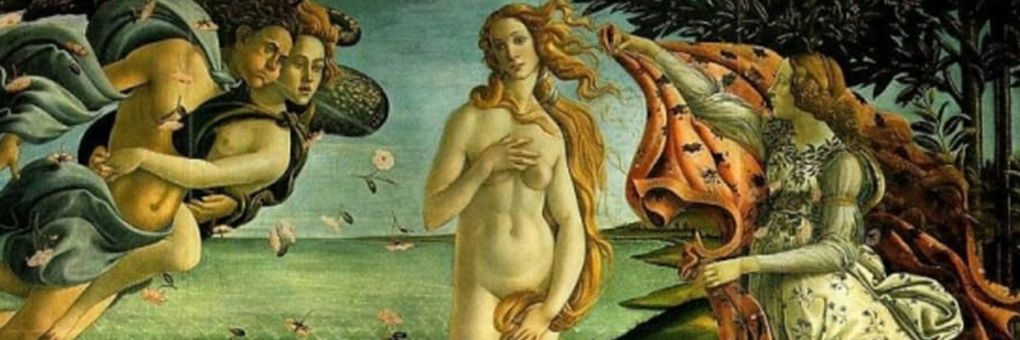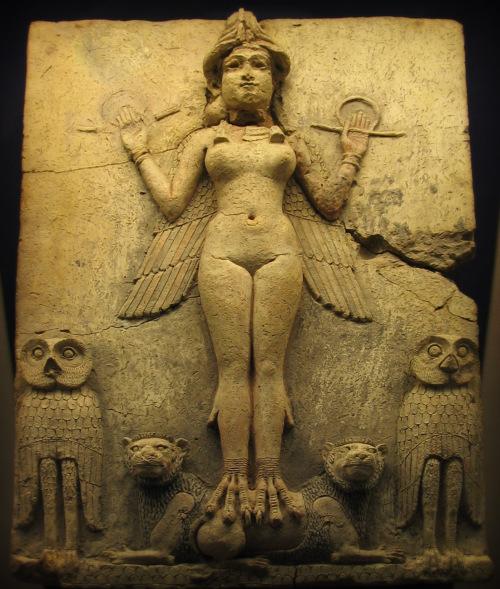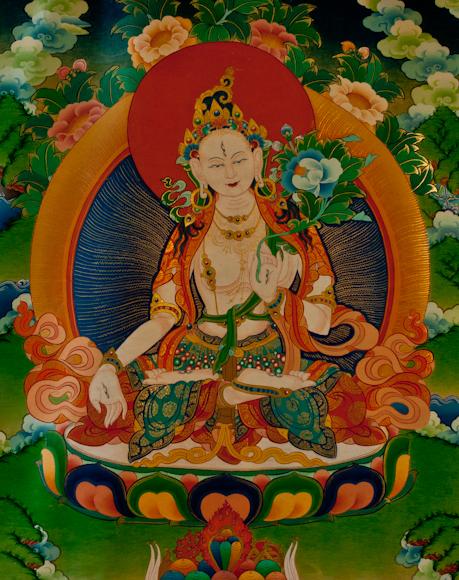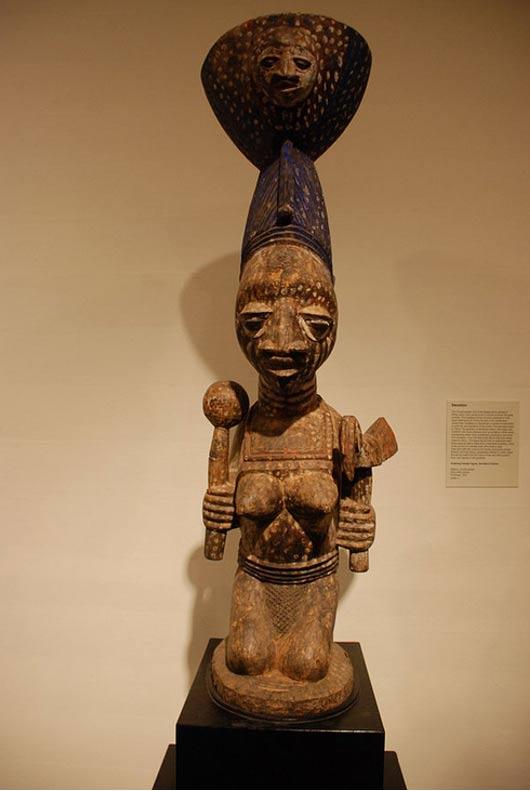Though we often think of ancient religions as boys’ clubs, the history of religion is full of powerful goddesses and holy women, many of whom fought hard for their positions and gained immense power thanks to their struggles. Though their stories have been eroded by time and patriarchal faiths, intriguing information remains. Here is a selection of a few of the oldest and most fascinating legends about goddesses and female religious leaders, some of which changed the world and have informed modern iterations of feminism as we know it.
◊
If you grew up going to regular religious services, you probably prayed to a god or deity who was referred to as “he.” But did you ever wonder, why is God always portrayed as a masculine figure? And why does it seem like religious leadership has been a boys’ club for so long, with women perpetually relegated to the shadows?
A glance at history reveals that it was not always this way. There is a long legacy of female or feminine religious deities, goddesses, and leaders, dating back to the earliest writings we know of. Almost every polytheistic religion had female deities who played important roles that have been historically obscured.
“At the dawn of Western civilization, 25,000 years of ‘her-story’ of the Goddess’ bountiful creativity were obliterated.” —Lynn Rogers, Edgar Cayce and the Eternal Feminine
Despite their power, it seems that even ancient goddesses had to go the extra mile to achieve equal rights. Across religions, there are stories of goddesses who underwent struggles in order to achieve power and autonomy. Let’s take a brief look at the complex legacies and folk legends of a few of religion’s most powerful and disruptive holy women.
Goddesses of Mesopotamia: Innana
The most ancient records we have of human civilization come from Sumer, a Mesopotamian civilization that existed from around the 5th to the 3rd millennium BCE. According to the records we have from that time, the Sumerians were extremely religious, and had a pantheon of gods and goddesses that puts Greek mythology to shame. In their civilization, several major female deities were prominent, such as Nanshe, goddess of social justice and prophecy; Tiamat, goddess of the salt sea and primordial chaos; and even Ninkasi, the goddess of alcohol (or specifically beer, according to some interpretations).
One of the most well-known goddesses from that time is Innana (or Ishtar), a widely honored goddess who embodied sensuality, love, fertility, courage, and war. Interestingly, despite her association with sensuality, she is never linked to religious marriage or motherhood. Innana appears in many Mesopotamian myths, including the famous poem “The Descent of Innana,” which tells the story of her journey to the underworld to save her widowed sister Ereshkigal.
“As daughter of the Moon and sister of the Sun, Inanna is the morning and evening star, Venus-Aphrodite, in the Sumerian pantheon. Yet her story is about a wife, mother, priestess, queen, and goddess who not only wrested from a god the laws and arts of civilization for her people, but who, by descending into the underworld and returning, assures us of the soul's immortality.” – Eloise Hart, via theosophy-nw.org
During the rise of the Babylonian civilization – and specifically during the reign of the Amorite king Hammurabi, which began in 1792 BCE – goddesses became increasingly obscured by worship dedicated to male gods. Though Innana’s legacy persisted, other famous goddesses were replaced by male gods. For example, Nisaba, a patron saint of the written word, was replaced by a god named Nabu.
Goddesses of Ancient Egypt: Isis
Ancient Egypt produced a great number of famous women – just check out the MagellanTV documentary “Egypt’s Lost Queens” for a glimpse of them – and, of course, religions from the civilization featured many female goddesses, too. Few Egyptian goddesses are more infamous than Isis, one of the most important religious figures of the ancient Egyptian civilization.
The first mentions of Isis appear in the Pyramid Texts, a collection of Egyptian prayers and spells meant to help Egyptian kings and queens survive into the afterlife. Isis was the wife of Osiris and mother of Horus, and she initially appeared as a secondary figure to her husband. Associated with both birth and death, she is responsible for healing and protecting kings, and she also supposedly created the first mummy. In addition, she was responsible for piecing together the fragments of her husband’s body after he was killed and scattered across the world.
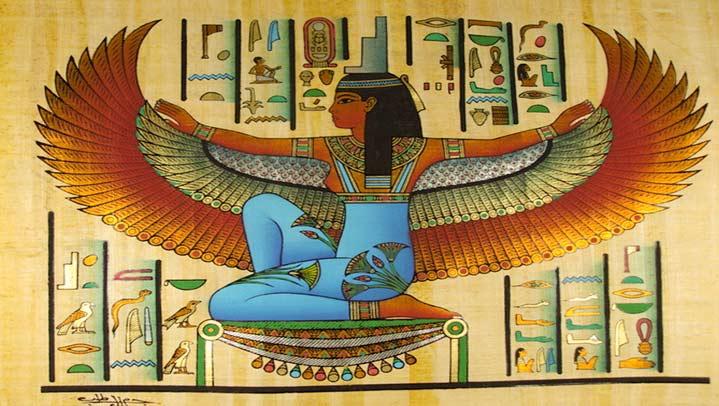
Over the centuries, the cult of Isis grew in power so much that her followers began believing that she was the Queen of the Universe, with the ability to control fate. They also believed she was responsible for the flooding of the Nile each year. In addition to her dominion over the dead, Isis had power over the living; she was known as the protector of women, a healer who could help women in childbirth and who could offer inspiration in times of need.
Like many other ancient gods and goddesses, Isis’s influence persisted across time and influenced other religions. Some believe that images of her nursing her son Horus may have inspired early Christian artists as they painted images of the Virgin Mary with Jesus. And she is also often linked to the MesInnana, due to associations of both goddesses with the underworld and with death and rebirth, and has even been compared to the Greek goddess Demeter.
Holy Women of Buddhism: Prajapati Gotam? and Tara
While Siddhartha Gautama, the forefather of Buddhism, was male, there are many different Buddhas in Buddhism – and some of them are female.
According to tradition, the first woman to seek ordination was Prajapati Gotam? (the spelling varies), who was the original Buddha’s aunt. She was the queen of a region of India now known as Nepal, and she took care of the Buddha during childhood after his mother died. After the Buddha rose to spiritual prominence, Gotam? is said to have walked over a hundred miles to insist that women be allowed to become monastics, too. Some Buddhist lore claims that she was accompanied by over 500 women (so perhaps, in a way, this was the earliest Women’s March).
“If [Siddhartha Gautama] is called the Father of Buddhism, [Prajapati Gotami] is the Mother of Buddhism, being the instigator of the creation of...the Buddhist monastic community of nuns, which was active for about a thousand years in India before once again disappearing.” – Julia Stenzel, “Questions about Mahapajapati Gotami’s Ordination”
Fortunately, Gotam?’s nephew listened to her requests and incorporated them into his teachings. Women would be allowed to become Buddhas, which makes sense because Buddhism does not place much importance on gender – Buddhists believe everyone has many past lives, meaning everyone was a different sex at one time or another.
After Gotam?, there have been many female Buddhas. One of the most famous is Tara, who in some interpretations embodies compassion and protection, both on the earth and on the path to enlightenment. She is believed to exist in every pious woman, and holds many roles within the faith. Like most female deities we’ve looked at, Tara also has a fierce side. She can appear in a blue form as a destroyer goddess, in red as a goddess of love, or in yellow as an incarnation of anger.
Women of the Early Semitic Tradition: Asherah
Asherah appears in early Semitic texts in which she is identified as the consort of the Sumerian god Anu, as well as Yahweh who would later become the monotheistic god of the Jewish faith. There is some debate as to whether Asherah the goddess was ever worshiped at all, and some archaeologists think the name solely refers to an object – but many do believe that Asherah was real, and was perhaps even a reinterpretation of the Mesopotamian goddess Ishtar. Regardless, there is evidence that women of the ancient Semitic tradition did worship in a specific, women-centric cult.
“When we burned incense to the Queen of Heaven and poured out drink offerings to her, did not our husbands know that we were making cakes impressed with her image and pouring out drink offerings to her?” – Jeremiah 44:19
Even after Judaism became a monotheistic faith and the Hebrew Bible (which is riddled with gender inequality) became the religion’s main text, it’s likely that Asherah was still sometimes worshiped by Jewish matriarchs during those times. The Old Testament even contains stories about women who paid tribute to matriarchal idols even after they were banned, and many scholars believe that these women were keeping the legacy of the cult of Asherah alive. Though little is known for sure about the early polytheistic Canaanite religions, archaeologists have discovered statues and other evidence that support the idea that early Jewish believers worshipped a goddess for some period of time.
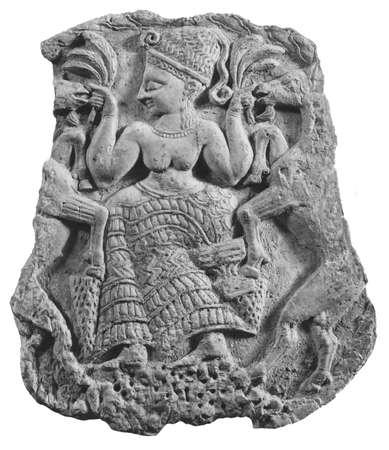 Ivory carving of Asherah
Ivory carving of Asherah
Goddesses of Pan-African Faiths: Oshun
The history of traditional African religions is incredibly multifaceted. Like most ancient religions, many early African faiths were polytheistic, and often venerated powerful women goddesses who would later provide the blueprints for modern goddess worship. Many of the stories from that time persisted despite the legacy of slavery and colonialism that would disrupt and scatter them.
One of the most long-lasting ancient African faiths, the Yoruba religion, originated in West Africa. Today it has about 44 million followers, most of whom live in Nigeria, though there are also variations of the faith all around the world. Within the faith, God is a being whose identity cannot be restricted to gender, but who can be reached only through intermediaries known as the Orishas.
One of the most famous goddesses of this faith is Oshun, a spirit or deity who represents one of the manifestations of God. She presides over rivers and fresh water, pleasure, fertility, and love, but she also represents everything from birth to political power, and is often viewed as the source of all life.
According to the sacred Yoruba text called the Ifa literary corpus, Oshun was the only woman among a group of primordial spirits called the Irunmole, sent to create the world. Ignored by the male spirits, Oshun formed a band of women called Iyami Aje. Without Oshun’s help, the male Irunmole deities failed at creating the world. Only then did Oshun rejoin them, telling them that nothing can be done without a balance of femininity and masculinity.
Goddess Worship, Past and Present: Overview
These stories are just small glimpses of the fragments that remain of some of the oldest religious figures on record. Of course, Greek and Roman mythology had a huge number of female goddesses, as did most of the ancient pagan faiths. Indigenous faiths around the world worshiped countless female goddesses, too.
A great deal of modern Hinduism also swivels around the idea of a feminine aspect to the universe, with the creation goddess Shakti being one of the faith’s three most powerful forces – the “activity in all things, the great power that creates and destroys, the primordial essence, the womb from which all things proceed and into which all things return,” as Savitri L. Bess writes. That quote could easily refer to most of the goddesses we’ve discussed so far.
“The development of the religion of the female deity in [the Near and Middle East] was intertwined with the earliest beginnings of religion so far discovered anywhere on earth.” – Merlin Stone, When God Was a Woman
Clearly, femininity has always been an integral part of religion, and indeed of civilization; many scholars have argued that the world’s earliest societies were matriarchal. So, how did we get from all these goddesses and women-inclusive faiths to the rise of monotheistic, patriarchal faiths like traditional Islam, Christianity, and Judaism? While the answer to that question is far too large to broach here, we can safely guess that there was a connection between the demonization of pagan and polytheistic faiths and the subjugation and minimization of women.
On the other hand, many have argued that excessive rumination on “Goddesses” and femininity can be limiting, and some say it can actually minimize the true meaning of what “God” has historically meant in religions across time. In Hindu scripture, the Old Testament, and many more sacred texts, God is frequently referred to as having masculine and feminine aspects – which makes sense, as it’s hard to imagine that an all-powerful being, if there is one (or many), would be limited by something as arbitrary as gender.

